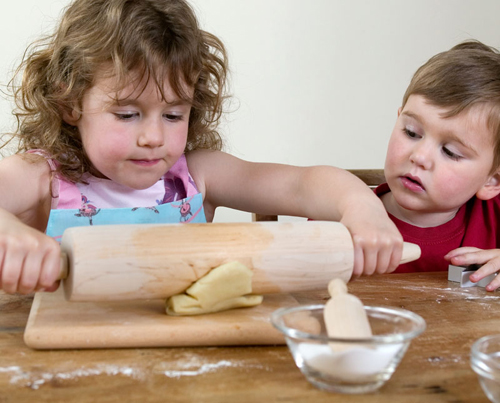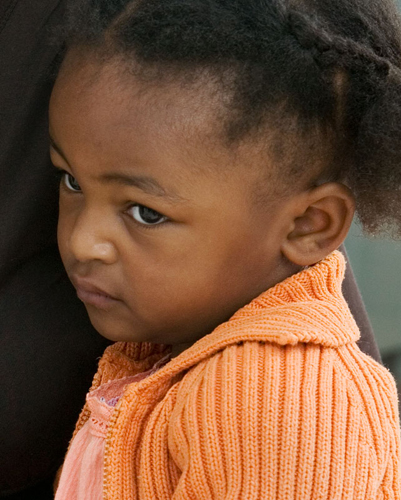While a toddler’s tears and tantrums are distressing,
this type of behavior is a crucial part of learning to grow up. If your
child does not get angry and learn to manage his rage at an early
stage, he will find it harder to express his true feelings and act
appropriately as he gets older.
“Lewis is quite jealous of his baby sister. He often acts up when I pick her up, so we try to involve him, too.”
—“Lewis is quite jealous of his baby sister. He often acts up when I pick her up, so we try to involve him, too.”
“A behavior pattern
that has been learned and repeated over time is known as conditioning—if
the pattern continues, the same result will always occur. ‘If you keep
doing what you’re doing, you’ll get the same result.’”
“Even though we are
separating we have promised each other to try to be consistent in the
way we parent Bella. A united front is crucial if we are to help her
learn how to behave appropriately and not confuse her.”
—“Even though we are
separating we have promised each other to try to be consistent in the
way we parent Bella. A united front is crucial if we are to help her
learn how to behave appropriately and not confuse her.”
There is no doubt that
between the ages of two and three toddlers can be very challenging.
Their short attention span, combined with the demands of learning a new
range of skills and emotions, means they can become overwhelmed very
easily. Your toddler may fluctuate from being calm and giggly to
hyperactive and angry in a matter of moments—and it may feel as if you
do, too. The good news is that by the time your toddler is two years old
he is ready to deal with and understand behavior limits and with your
help can begin to control his own impulses.
A child of this age learns
a great deal through imitation, so he will be learning about behavior
from everyone around him, but most of all he will be learning from you.
It is a good time to start modeling the kinds of behavior you would like
to see in your toddler.
Your approach to
managing your toddler’s behavior is influenced by your own experiences
of discipline and punishment—or the lack of it .
Some parents may find the idea of a routine stressful because they
don’t like to conform; others may be tempted to establish a routine that
is so rigid there is no room for flexibility. However, behavior limits
are about much more than instilling an element of parental control. They
are an important stage in your child’s understanding of “right and
wrong.” You are helping him begin to learn to respond appropriately in
social and other situations. Behavior-shaping is less about restraining
your toddler’s behavior and more about enabling him to learn skills that
will help him to make friends, be accepted socially, and eventually
help him integrate in the world at large.
Managing behavior
isn’t about encouraging your child to conform unquestioningly, or about
being a perfectly behaved “good” boy; it is about developing
self-expression and control and understanding what behavior is
appropriate in different circumstances—and the consequences of that
behavior. It is also the way that children first begin to understand the
concepts of “sorry” and “forgiveness” (see Letting go and moving on).
Learning from others
Your toddler discovers new things by copying, so any older
siblings will invariably become role models—in both their good and their
not so good behavior.

The A, B, C of behavior
What causes us to behave
the way we do? There are many theories, but it is commonly accepted that
everything we think and do is learned behavior, conditioned by the
experiences, people, and events in our lives. The way we act, what we
say, and even our psychological and biological processes, have all been
learned over time. A lot of learned behavior has its roots in our
toddler years, which is when the brain first begins to build up its
network of learned responses and develops beliefs that guide future
behavior.
Behavior does not just
happen. It always has a cause and it always triggers an effect. This is
very useful for parents to remember because it is often much easier to
avoid the cause of your toddler’s unwanted behavior in the first place
than it is to change the outcome (such as a tantrum). Psychologists call
this the A, B, C approach.
The next time your toddler has a tantrum, ask yourself:
“C” is your own response to the behavior, as well as what happened to your child as a result of his behavior.
What triggered the tantrum? A cause or past history.
How did your toddler react? Behavior.
What happened as a result? Consequence, response, or outcome.
Here is an example of an ABC of behavior for a two-and-a-half-year-old:
It would be easy for Lucy
to focus on the outcome (Grace’s refusal and her tantrum) and to think
she needs to work on altering that, but by using the ABC approach, she
can look at what happened immediately before the tantrum. The real cause
was giving Grace too much choice, which triggered frustration and
Grace’s difficulty in managing her feelings; and it was also compounded
by Lucy’s impatient response. Next time, Lucy will give Grace just two
dresses to choose from—“Would you like to wear the pink one or the blue
one?”—which is more appropriate for her daughter’s level of development.
She will allow more time to do things at toddler speed, too. The result
is likely to be a quick and easy decision followed by plenty of hugs
and smiles.
Avoiding trouble
does not mean you are pandering to your toddler. Children in this age
group still need adult help to manage their behavior. The fewer
opportunities your toddler has to become unnecessarily distressed, the
quicker he will learn positive behavior patterns and the less likelihood
there will be for his unwanted behavior to become an automatic
response. If a pattern of behavior is repeated often enough, then the
behavior becomes a conditioned response (see Classical conditioning), which can be harder to change.
A cause: Mom (Lucy) asks Grace which dress she would like to wear.
Behavior: Grace keeps saying “No” to every option.
Consequence: Lucy loses patience and makes Grace’s choice for her. Grace refuses to get dressed and has a full-scale tantrum.
Understanding his behavior
Many of our reactions to
people and events are affected by the way we have been conditioned to
respond through repeated experience; either through what we have been
told or because of events deeply buried in our memories. What triggers
our feelings or responses (the cause) and links them with the outcome
(the effect) may not always be obvious—but your brain has nevertheless
learned to make the association. There are two types of conditioned
behavior. Psychologists classify these as classical conditioning
(learning by association) and operant conditioning (learning by effect).
Classical conditioning
The most well-known
example involves a scientist called Ivan Pavlov and some dogs. He knew
that the sight and smell of food would make dogs drool, but he wanted to
see whether he could introduce a new stimulus to trigger the drooling,
without food being present. He began to ring a bell each time he brought
food to the dogs. Eventually the dogs learned to associate food with
the ringing of the bell on its own, and would drool whenever he rang it.
They had learned by association.
Learning by association:
Original association—Jonny’s mother always buys him a lollipop as a treat when he goes swimming.
Changed
association—whenever he is given a lollipop Jonny asks to go swimming.
The cause, or trigger, for going swimming has changed from being Jonny’s
mother, to the lollipop that she always gives to him. The lollipop has
become linked strongly in Jonny’s past experience to going swimming, and
so now, whenever he is given a lollipop, the lollipop itself becomes
the trigger (A cause) that makes him ask for swimming. It has become an automatic response (Behavior).
Causes and triggers
There will be a reason why she has behaved in a certain way.
Look back to find the trigger and you may be able to prevent the
behavior from being repeated.

Operant conditioning
Psychologist, B.F. Skinner,
devised an experiment to show that if the consequences of a behavior
are positive we are more likely to repeat that behavior. He gave pigeons
a choice of red and green levers to peck to get food. Over time the
pigeons learned which color would deliver food and which would not. They
had learned by effect.
Learning by effect:
A toddler can become conditioned to react automatically when a familiar trigger stimulates an automatic response .
Understanding what triggers your child to laugh or cry may not be
immediately obvious. Learning to decode this can take patience and
increased awareness of his personal triggers and learned behavior.
Original
effect—Jonny bites another child and becomes upset. His mother gives him
a hug. Jonny gets a positive message and does it again.
Changed
effect—his mother removes him from the room. Jonny gets a negative
message and doesn’t do it again. The alteration in Jonny’s mother’s
response (Consequence)
has altered Jonny’s experience of what happens when he bites someone
and therefore changed the probability of him doing it again (Behavior).